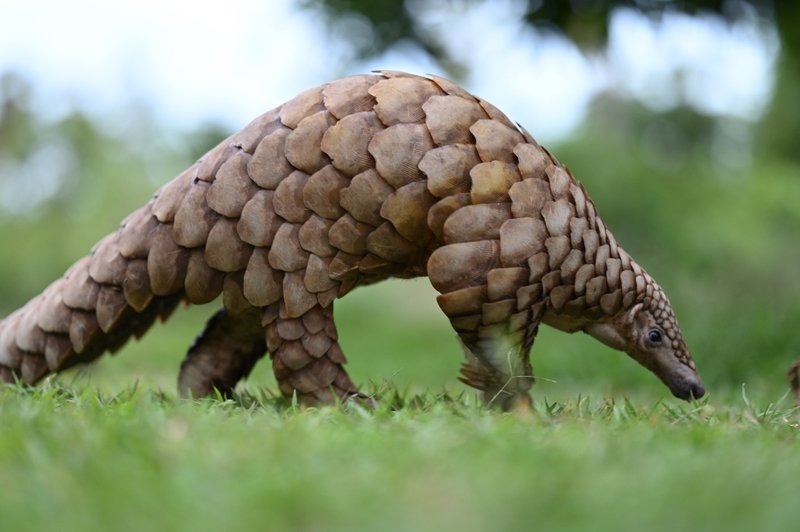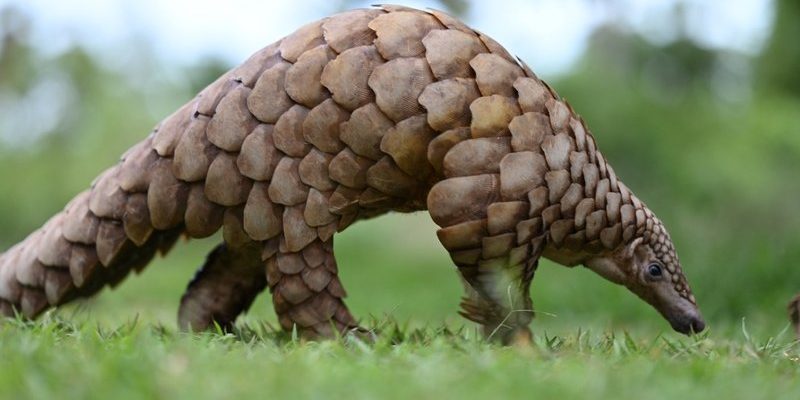
The plight of the Indian pangolin reflects broader global conservation issues. Imagine an intricate web where the loss of one species can impact entire ecosystems. Pangolins play a crucial role in controlling insect populations, which contributes to a balanced environment. However, due to poaching and habitat loss, their numbers are dwindling at an alarming rate. In this article, we’ll explore the status of the Indian pangolin, the threats they face, and some exciting conservation efforts happening around the globe.
Understanding the Indian Pangolin
The Indian pangolin, or *Manis crassicaudata*, is one of eight species of pangolins found worldwide. These intriguing creatures are known for their unique scales, which are made of keratin—the same material that makes up human nails. Picture a living, breathing ball of armor! These scales help protect them from predators, but they also make them targets for poachers who sell them on the black market.
In their natural habitat, Indian pangolins can be found across the Indian subcontinent, including countries like India, Nepal, and Bangladesh. They primarily inhabit forests and grasslands, digging burrows to find ants and termites, which make up most of their diet. Their long, sticky tongues are perfectly adapted for reaching into narrow spaces to snag their meals. It’s pretty impressive how they’ve evolved to thrive in their environment!
However, despite their fascinating attributes, the Indian pangolin is currently listed as *Endangered* on the International Union for Conservation of Nature (IUCN) Red List. This classification highlights the urgent need for awareness and action to protect this extraordinary species.
The Threats Facing Indian Pangolins
Let’s dive deeper into the challenges facing the Indian pangolin. Honestly, it’s alarming to see how many threats are impacting their survival.
- Poaching: The most significant threat to Indian pangolins comes from illegal hunting. Their scales are highly sought after in traditional medicine and as status symbols, particularly in some Asian countries.
- Habitat Loss: Urbanization and logging have led to significant habitat destruction. As their homes vanish, pangolins struggle to find food and shelter, making survival increasingly difficult.
- Human-Wildlife Conflict: As humans encroach on their habitats, conflicts can arise. Unfortunately, pangolins are often killed due to misunderstandings or fear of pests.
It’s heartbreaking to think about how vulnerable these creatures are. They’re not just losing their homes; they’re losing their very chance at survival. And while they may seem tough, the reality is that pangolins are incredibly sensitive to changes in their environment.
Current Conservation Efforts
So, what’s being done to save the Indian pangolin? Here’s the thing: awareness and action are crucial. Various organizations across the globe are working tirelessly to protect these incredible animals.
First and foremost, many conservation groups are focused on anti-poaching efforts. This includes increased patrolling in critical habitats to deter poachers and raising awareness about the consequences of illegal wildlife trade. Education plays a vital role in changing perceptions about pangolins and promoting their protection.
Additionally, habitat restoration projects are gaining traction. By replanting native vegetation and creating protected areas, these initiatives aim to restore ecosystems that support Indian pangolins. It’s like giving them a new lease on life!
On a global scale, the Convention on International Trade in Endangered Species of Wild Fauna and Flora (CITES) plays a significant role. They’ve increased protections for pangolins, making it illegal to trade them across borders. This international cooperation is essential in addressing the crisis and ensuring that laws are upheld.
The Role of Local Communities
One of the most powerful ways to protect the Indian pangolin is to involve local communities. When people understand the value of wildlife and their ecosystems, they’re more likely to become stewards of the land.
Community-based conservation projects are emerging. These initiatives often educate locals about sustainable practices and the importance of preserving their natural resources. When communities thrive without exploiting wildlife, such as pangolins, it promotes a healthier ecosystem for all.
Additionally, some programs encourage alternative livelihoods for those who might rely on poaching. By providing training in sustainable agriculture or eco-tourism, locals can find new ways to earn a living that don’t harm wildlife. It’s a win-win for both the community and the environment!
The Importance of Public Awareness
You might be wondering how you can help make a difference. Public awareness is crucial in the fight against wildlife trafficking. Spreading the word about the Indian pangolin and its plight can inspire others to take action.
One simple way to raise awareness is through social media. Sharing informative posts, articles, or documentaries can help educate your friends and family about the importance of protecting pangolins. Consider supporting campaigns or organizations dedicated to their conservation.
Participating in local conservation efforts, such as clean-ups or fundraising events, can also contribute to the greater cause. When communities rally together to protect their environment, it fosters a sense of responsibility and care for nature.
Future Outlook for the Indian Pangolin
While the situation may seem dire, there’s hope for the Indian pangolin. Conservation efforts are gaining momentum, and with increased awareness, people are beginning to understand the importance of protecting these amazing creatures.
As communities and organizations continue to work together, we can start to see positive changes. Remember, every little bit helps. Whether it’s spreading awareness, supporting conservation efforts, or even adopting a more sustainable lifestyle, your actions can contribute to the survival of the Indian pangolin.
The future of the Indian pangolin depends on all of us. By staying informed and proactive, we can bring attention to their struggles and take meaningful action to ensure they thrive for generations to come.
In conclusion, the Indian pangolin is indeed endangered, but there’s a global effort underway to turn the tide. It’s a complex issue that requires a collective response, but with awareness and action, we can protect this remarkable species. Let’s be the voices for the voiceless and work together to save the Indian pangolin!

